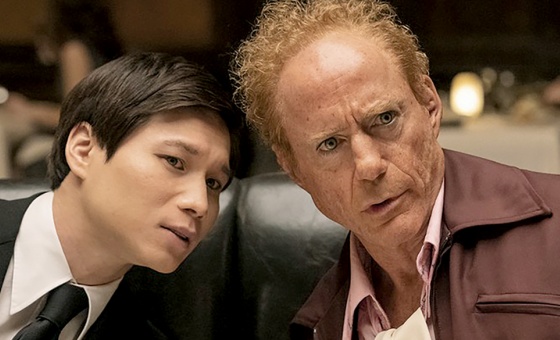This is the last article you can read this month
You can read more article this month
You can read more articles this month
Sorry your limit is up for this month
Reset on:
Please help support the Morning Star by subscribing here
SOVIET CITIES Labour Life Leisure
by Arseniy Kotov
FUEL £24.95
“I WAS born in 1988 and have no experience of life in the USSR, but looking at its architecture it is clear that it was a great civilisation with a genuine intention to build a fairer society,” writes Arseniy Kotov in the introduction to his fascinating photographic record of the Soviet Union interrupted.
Kotov denotes the ever-present art on the facades of buildings, particularly housing estates, with motives from socialist life and regrets the demise of the architecturally legendary palaces of culture — vibrant communal hubs with workshops, lectures, performances — these days transformed into indoor markets where now, its once gainfully employed visitors and participants, eke a meagre living.
Paging through this book of exquisitely composed images, it becomes abundantly evident how a plethora remarkably talented architects — from the mid-50s onwards — proudly and with much gusto took up the mantel of Constructivists Konstantin Melnikov, Ilya Golosov, El Lissitzky or the Vesnin brothers (Leonid, Victor and Alexander).
As Kotov points out, most of this modernist architecture embodies the socialist values initiated in 1917: “The advocacy of simple, pure, rational and open democratic forms.”
Said architects did their absolute best to improve the lives of Soviet people, to enrich them, make them more participatory and open them up to culture.
However, the Boris Yeltsins of the 1990s made a dastardly Faustian pact with imperialism faster than you could say “svoloch” (scumbag) and proceeded to throw the baby out with the bath water.
The present decay and longstanding disrepair of this outstanding architectural legacy, combined with a widespread — particularly among developers and officialdom — lack of respect for its historical meaning or aesthetic value is being slowly remedied and reversed by organisations like Moscow Architecture Preservation Society (MAPS).
Kotov is a Situationist and Charles Baudelaire and Guy Debord would surely have applauded his lyrical and tender vistas that heal and offer solace — allbeit laced with much sadness and melancholy.
“I like to take pictures during the winter in cloudy weather, not long after sunset or just before sunrise [during] ‘the blue hour’,” Kotov says baring his soul. “It allows you to see the warm yellow colours inside windows of living blocks and the twilight gloomy colours outside.”
Hats off to the publishers FUEL for their bold vision and enterprise.
fuel-design.com/publishing/soviet-cities/
FUEL are now crowd-funding Kotov second book Soviet Seasons at www.kickstarter.com/projects/soviet-cities/soviet-seasons-arseniy-kotov?...










